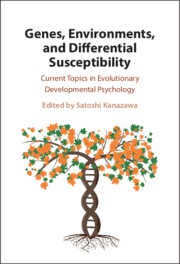Refine search
Actions for selected content:
473 results
14 - “Hunger Draws the Map”
-
-
- Book:
- Hunger Redraws the Map
- Published online:
- 01 November 2025
- Print publication:
- 20 November 2025, pp 391-433
-
- Chapter
- Export citation
Instrumentalization of National Identity in Canada’s Official Languages: Chrétien, Harper and Trudeau
-
- Journal:
- Canadian Journal of Political Science/Revue canadienne de science politique , First View
- Published online by Cambridge University Press:
- 07 November 2025, pp. 1-23
-
- Article
-
- You have access
- Open access
- HTML
- Export citation

Cultural Property
- Law, Policy, and Markets
-
- Published online:
- 05 November 2025
- Print publication:
- 30 October 2025
3 - Queueing Theory and Resource Allocation
-
- Book:
- Insight-Driven Problem Solving
- Published online:
- 21 October 2025
- Print publication:
- 30 October 2025, pp 111-139
-
- Chapter
- Export citation
1 - Introduction
-
- Book:
- Can the Public be Trusted?
- Published online:
- 11 October 2025
- Print publication:
- 30 October 2025, pp 1-30
-
- Chapter
-
- You have access
- Open access
- HTML
- Export citation
“Join us in preparing people for tomorrow’s jobs”: Robert Reich, the “New Economy,” and mythic thinking as interventionist knowledge
-
- Journal:
- Science in Context , First View
- Published online by Cambridge University Press:
- 07 October 2025, pp. 1-17
-
- Article
-
- You have access
- Open access
- HTML
- Export citation
A Harm Reduction Approach to Attitudinal Racism
-
- Journal:
- Canadian Journal of Philosophy , FirstView
- Published online by Cambridge University Press:
- 09 September 2025, pp. 1-25
-
- Article
-
- You have access
- Open access
- HTML
- Export citation
Behaviorally informed interventions can increase take-up of public employment services, but conversion remains challenging: insights from an RCT in British Columbia, Canada
-
- Journal:
- Behavioural Public Policy , First View
- Published online by Cambridge University Press:
- 08 September 2025, pp. 1-13
-
- Article
-
- You have access
- Open access
- HTML
- Export citation

Genes, Environments, and Differential Susceptibility
- Current Topics in Evolutionary Developmental Psychology
-
- Published online:
- 04 September 2025
- Print publication:
- 18 September 2025
13 - Partnering with stakeholders
- from Part 3 - Engages Others
-
-
- Book:
- Leading and Managing Health Services
- Published online:
- 15 August 2025
- Print publication:
- 28 August 2025, pp 142-154
-
- Chapter
- Export citation
2 - Punctuated Equilibria
-
- Book:
- Punctuated Equilibria and Sino-American Relations
- Published online:
- 25 July 2025
- Print publication:
- 14 August 2025, pp 20-53
-
- Chapter
- Export citation
4 - Wealth
-
- Book:
- Stratification Economics and Disability Justice
- Published online:
- 21 June 2025
- Print publication:
- 05 June 2025, pp 96-114
-
- Chapter
- Export citation
5 - From Private Prejudice to Public Policy
- from Part III - The Decline of Liberalism, the Rise of Populism, and the Rights of Women
-
- Book:
- Women's Rights in Liberal States
- Published online:
- 24 May 2025
- Print publication:
- 05 June 2025, pp 139-185
-
- Chapter
- Export citation
1 - Stratification Economics and Disability Justice
-
- Book:
- Stratification Economics and Disability Justice
- Published online:
- 21 June 2025
- Print publication:
- 05 June 2025, pp 25-51
-
- Chapter
- Export citation
2 - Employment
-
- Book:
- Stratification Economics and Disability Justice
- Published online:
- 21 June 2025
- Print publication:
- 05 June 2025, pp 52-75
-
- Chapter
- Export citation
A Conflict of Laws Analysis of the Nigerian Same-Sex Marriage (Prohibition) Act (2013)
-
- Journal:
- Journal of African Law / Volume 69 / Issue 2 / June 2025
- Published online by Cambridge University Press:
- 22 May 2025, pp. 271-287
- Print publication:
- June 2025
-
- Article
-
- You have access
- Open access
- HTML
- Export citation
Fairness in Women’s Sports? Explaining State Legislator Support for Transgender Athlete Bans
-
- Journal:
- State Politics & Policy Quarterly / Volume 25 / Issue 3 / September 2025
- Published online by Cambridge University Press:
- 21 May 2025, pp. 348-360
- Print publication:
- September 2025
-
- Article
-
- You have access
- Open access
- HTML
- Export citation
A Thaw in the Chill? Charities and Public Policy Engagement in Canada
-
- Journal:
- Canadian Journal of Political Science/Revue canadienne de science politique / Volume 58 / Issue 1 / March 2025
- Published online by Cambridge University Press:
- 21 May 2025, pp. 95-125
-
- Article
-
- You have access
- Open access
- HTML
- Export citation
Welfarism and Person-Centred Justice
-
- Journal:
- Canadian Journal of Law & Society / La Revue Canadienne Droit et Société / Volume 39 / Issue 3 / December 2024
- Published online by Cambridge University Press:
- 29 April 2025, pp. 580-598
-
- Article
-
- You have access
- Open access
- HTML
- Export citation
Conservative bias in perceptions of public opinion among citizens: perceived social norms about abortion rights in post-Roe United States
-
- Journal:
- Political Science Research and Methods , First View
- Published online by Cambridge University Press:
- 04 April 2025, pp. 1-10
-
- Article
-
- You have access
- Open access
- HTML
- Export citation
